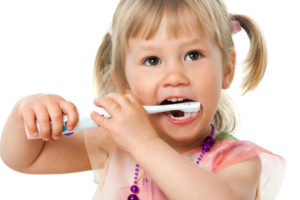Electric toothbrushes may seem little more than a fancy gadget that clutters up your bathroom countertop. But a 2014 study shows they might be better for your oral health than manual brushes.
The international, evidence-based research group Cochrane found that electric toothbrushes reduced dental plaque 21 percent more and gingivitis 11 percent more than a manual brush following three months of use. The study analyzed the results of 56 different studies to reach the conclusion.
In the analysis, the researchers considered all types of electric brushes: those with oscillating heads, sonic brushes with vibrating headed, powered brushes that move side-to-side, ones that remove plaque using a mild electrical charge and more. No conclusion was reached regarding the best type of electric brush.
The British Dental Health Foundation agrees with Cochrane’s findings, saying that electric toothbrushes are 25 percent more effective than manual brushes at removing plaque. And it appears consumers have an opinion, too. Oral-B says its sales of electric toothbrushes have more than doubled since 1998.
Why Are Electric Brushes Better?
There are varying opinions, but electric toothbrushes may be more effective due to built-in timers. For good oral health, you should brush your teeth for at least two minutes twice a day. Many people don’t realize exactly how long two minutes is and may only spend a few seconds brushing. Many electric toothbrush models have timers that let you know when you’ve brushed long enough.
Additionally, some electric brushes let you know when you’re pressing too hard on your gums. That way, you don’t “over brush” and cause damage to your teeth and gums. Electric brushes are also helpful for people who may not be able to brush their teeth well due to age or disability.
Is There a Downside?
Some electric toothbrushes can get rather pricey — upwards of $100. Others are more affordable, but may not come equipped with pressure monitors and timers. Even so, don’t despair if you don’t want to drop a bundle on an electric toothbrush.
Manual toothbrushes do a great a job cleaning your teeth, provided you brush long enough and adequately. Here are some tips to help:
- Place the brush at a 45-degree angle to your gums and sweep the brush away from your gums.
- Clean your teeth by gently moving the brush back and forth in tooth-wide strokes.
- Be certain to brush your teeth’s outer, inner and chewing surfaces.
- Clean the inside of your front teeth by holding the brush vertically and gently moving it up and down.
- Don’t use too much pressure, as it can damage your gums. Use a light, circular motion.
- Brush your tongue to remove bacteria and make your breath fresh.
- Set a timer if you’re not sure you’ve brushed long enough.
No matter how good of a job you do brushing at home, it’s no substitute for professional cleanings. If it’s time for your biannual cleaning and exam, give us a call to schedule an appointment today!


